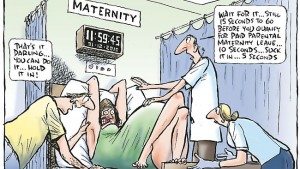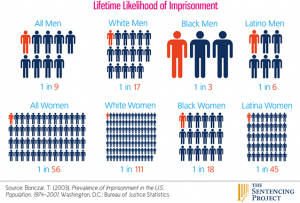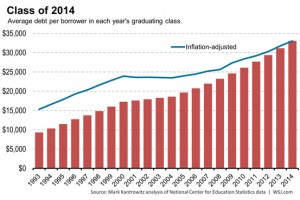In one large survey of 500 American adolescent girls (ages 9-16), about 70% believed magazine pictures influenced their idea of what is to be considered an ideal body shape, and 47% said this resulted in them desiring to lose weight (Clay 2005). Even though “thinness sells,” the effects of portraying ultra-thin models on covers, billboards, and every other media source can be damaging. Is America going to realize this and do something about it?
Why Is This Important?
The teenage years are a crucial time in one’s development. Things that happen during this time can have profound effects in the future. There is a “pronounced and progressive drop in girls’ self-esteem from 12 to 17 years of age. In contrast, boys’ self-esteem was much more stable, showing only a slight and short-lived decline from 14 to 16 years. Thus, comparatively, Western teenage girls appear to suffer from falling self-esteem,” (2005). Portraying ultra-thin models across all forms of media and advertisements can be damaging. This issue can affect anyone, but females are the primary victims. This society is oppressive to women in numerous ways, and lowering body image and self-esteem is not going to help girls fight through these oppressive qualities of the culture; instead it will prolong them.
In a study it was found that viewing ultra-thin models led to decreases in both body satisfaction and self-esteem in girls aged 11-16. The changes in their self-esteem were fully mediated by changes in their body satisfaction (2005). This is empirical data proving the negative affects of viewing models that have unattainable bodies. Having low self-esteem and a negative body image can lead to numerous problems, especially for girls at such a vulnerable age. Eating disorders are a common issue resulting from poor body satisfaction, and models are often victims of these disorders since they have to try and maintain incredibly thin figures to continue working. On top of that, just having low self-esteem can keep one from pursuing goals outside of body image related ones. When one is so unsatisfied with her body, she will spend a lot of time worrying about the way she looks and trying to figure out ways to change herself. In a culture so heavily controlled by beauty and attractiveness, what could be done?
What Can and Should Be Done
In 2015, France joined Israel, Spain, and Italy and started to ban excessively skinny models from working in the fashion industry. This bill requires models to have a medical certificate saying that he or she has a healthy BMI. Also, any fashion agency that is found using models with a BMI under 18 could face up to six months in jail and a fine of 75,000 euros (Stampler, 2015). This bill was put in place to discourage unhealthy behaviors by models and also to hopefully spread the idea to audiences, which includes young girls, that ultra-thin is not the ideal, and hopefully get the idea across that there is no standard weight or size that is considered beautiful. By fining the companies breaking this policy, it discourages them to use ultra-thin models on the idea that thinness will sell more.
America should look to these other countries as proof that policies like this can be put in place and realize it will be incredibly beneficial to the public and to the models. By discouraging ultra-thinness, models will no longer feel the need to achieve such unhealthy bodies and the public will not believe that those incredibly thin figures are the ideal bodies.
Conclusion
It has been shown through studies the dangerous effects of seeing ultra thin models in media. America should learn from these other countries’ political moves and see the importance and relevance of these issues. These policies can have a wonderful affect on females of all ages, and especially on teenage girls who are at their most vulnerable time to feel self-conscious.
Using these other countries as examples, people, especially social workers, should advocate for positive body image and make aware to everyone how influential and harmful images in the media of ultra-thin models can be. Spreading awareness can alleviate some of the issues, and then also bring it to the forefront of political action.





